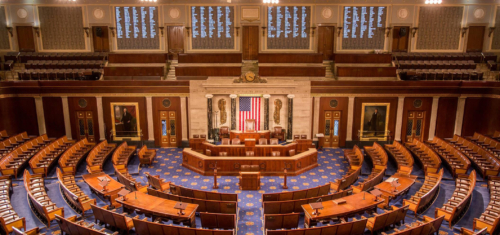Allow Startups to Carry Forward Operating Losses and R&D Credits
Most new businesses lose money in their initial years – sometimes for many years – before hopefully becoming profitable. Such losses are often due to substantial research and development (R&D) investments, salaries, and other expenses that exceed earnings. For many startups, R&D and salaries can be the primary expenses of the new company in its early years. Whatever the cause, startups, because they are new, have no previous income against which to apply current operating losses. Moreover, income against which losses can eventually be deducted might not materialize for years.
Even more problematic, two aspects of the current tax code that restrict loss and credit carry-forwards – Sections 382 and 383 – can have the effect of virtually eliminating any carry-forward tax benefit for startups. Sections 382 and 383 were written in the mid-1980s to prevent “loss trafficking” – companies acquiring failing firms with large losses solely to use the acquired company’s tax losses to offset other unrelated income. Section 383 pertains to tax credits, while Section 382 pertains to net operating losses. The rules can virtually eliminate the use of net operating losses and credits following transactions perceived as a change in ownership.
Startups often depend on outside investments – from venture capital firms or other sources – to finance R&D and other expenses, sometimes for many years. Such investments are critical for the survival and growth of new firms – but often trigger 382 and 383 change-of-ownership restrictions, potentially nullifying net operating loss carry-forward tax benefits, including for R&D investments. In other words, Section 382 and 383 carry-forward restrictions actually punish startups for incurring the very kinds of investments that federal tax policy explicitly encourages for older established firms. With this policy inconsistency in mind, CAE recommends that a safe harbor be created for startups to protect them from the unintended consequences of Sections 382 and 383 limitations.
Allow Startups to Expense 100 Percent of Business Investment
The Small Business Tax Revision Act of 1958 created for the first time a special first-year depreciation allowance, whereby small businesses could deduct or “expense” from their taxable earnings a portion of the total cost of capital and equipment investment, pursuant to section 179 of the Internal Revenue Code. Expensing is the most accelerated form of depreciation, allowing businesses to write off the cost of business investment immediately rather than over time. Future deductions are not as valuable to businesses due to the time value of money and because deductions are not indexed for inflation. Expensing stimulates business investment by maximizing the tax benefit of depreciation, thereby effectively lowering the cost of the capital required to make the investment.
CAE recommends that startups be allowed 100 percent first-year expensing of all business-related capital, equipment, real estate, and research and development investment. Expensing would only be relevant for those new firms generating positive earnings in their early years, and many startups do not (see recommendation above). Still, for those that do, 100 percent first-year expensing would be enormously significant and impactful. According to an analysis by the Treasury Department, 100 percent expensing lowers the average cost of capital on new investments by more than 75 percent. Such savings are enormously significant, especially for new businesses for whom access to capital at reasonable terms remains a principal challenge.

Enhance the Payroll Tax Provisions of the PATH Act
The Research and Development tax credit is particularly relevant for startups, which often incur substantial losses in their early years due to research and development of new products and services, methodologies, and techniques – and for whom preservation of cash flow and operating capital is crucial to survival. And yet, until recently, startups were largely shut out of any benefit associated with the credit because startups often have no taxable earnings (for years) against which to apply the credit.
The Protecting Americans from Tax Hikes (“PATH”) Act of 2015 made a number of improvements to the application of the R&D tax credit, perhaps most notably finally making the credit permanent after numerous extensions and expirations since its creation in 1981. Now certain of the credit’s availability, businesses can make investment decisions more effectively and efficiently.
The PATH Act also addressed the disconnect between the policy intention of the R&D credit and startups by allowing new businesses to apply the credit against payroll taxes, rather than income taxes, up to $250,000 annually. To qualify, companies must have had gross receipts for five years or less and gross receipts of less than $5 million for the tax year the credit is applied.
CAE recommends enhancing the PATH Act’s tax provisions for startups by: 1) aligning the criterion for eligibility with that of Section 1202 of the tax code; 2) raising the eligibility threshold; and, 3) increasing the deduction limit.
First, CAE recommends that the eligibility criterion be changed from gross receipts to gross assets. This change would make the PATH Act provisions consistent with the tax code’s definition of “Qualified Small Business,” (QSBs) which are currently defined as businesses with “less than $50 million in gross assets.” This consistency would simplify and harmonize related provisions of the tax code, facilitating compliance and reporting by investors and, thereby, promoting capital formation.
Second, CAE recommends that the eligibility threshold for the PATH Act’s payroll tax provisions be raised from the current definition of QSBs of “less than $50 million in gross assets” to “less than $100 million in gross assets.” The current gross asset limit is too restrictive, as the high costs of innovative research, coupled with valuable intellectual property and successive rounds of financing, often push new innovative companies over the $50 million limit (see recommendation regarding Section 1202 below).
Finally, CAE recommends that the payroll tax credit deduction limit be raised from the current $250,000 to $1 million. Doing so would align U.S. policy with similar policy in Canada, a major innovation competitor to the United States.
Incentivize the Formation and Commitment of Angel Capital
Section 1202 of the tax code was enacted in 1993 to incentivize investment in “qualified small businesses” (QSBs) by excluding 50 percent of capital gains on investments held for at least five years from federal income tax. The PATH Act of 2015 made permanent a 100 percent exclusion from capital gains tax for any gains on long-term investments in qualified small businesses, up to $10 million or ten times the original investment, whichever is greater. Previously, the American Recovery and Reinvestment or “Stimulus” Act of 2009 raised the excluded portion from 50 percent to 75 percent, and exempted any gains from the Alternative Minimum Tax (AMT). Subsequent legislation raised the exclusion to 100 percent and extended the AMT exclusion temporarily. CAE recommends that this full exclusion from federal income tax of any gains on angel investments in startups held for at least five years be retained in order to maximize the pay-off on any successful investments.
CAE also recommends that the Section 1202 gross asset definition for QSBs be raised from the current “less than $50 million in gross assets” to “less than $100 million in gross assets.” The current gross asset limit is too restrictive, as the high costs of innovative research, coupled with valuable intellectual property and successive rounds of financing, often push growing new companies over the $50 million limit and, therefore, out of Section 1202’s favorable treatment of capital gains.
Finally, at present the Section 1202 exclusion only applies to investments in companies organized as C corporations. Because most new businesses are launched as S corporations, partnerships, or limited liability companies (LLCs) – “pass-throughs” – CAE also recommends that the 1202 exclusion be applied to any startup that converts to a C corporation within five years, and that the period of time spent as a pass-through count toward the five-year holding period required by Section 1202. In other words, angel investors would not have to hold the investment for five years beyond conversion to a C corporation, but only five years beyond the original investment in the company.
Improve Treatment of Startup Investment Losses
As a counterpart to the Section 1202 tax treatment of angel investment gains, Section 1244 of the tax code allows investors in qualified small businesses to deduct losses on such investments as an ordinary loss (deducted from ordinary income) rather than as a capital loss. Normally, the tax code treats equity investments as capital assets and, therefore, losses are deducted as capital losses to offset capital gains. If capital losses exceed gains in a particular year, remaining losses are deductible up to a limit of $3,000 annually, with any additional remaining losses carried forward to subsequent years. By contrast, a loss on a Section 1244 investment is deductible from ordinary income up to $50,000 for individuals and $100,000 for couples filing jointly.
To qualify for Section 1244 treatment, the issuing company’s aggregate equity capital must not exceed $1 million at the time of issuance, the company must have derived more than 50 percent of its income from business operations rather than passive investments for the previous five years, and the shareholder must have purchased the stock directly from the company and not received it as compensation. Startups generally don’t issue stock for years after launch, if ever – nor have they been in existence for five years – and, therefore, currently don’t meet the requirements of qualifying small businesses.
To further incentivize seed-stage investments in start-ups, CAE recommends expanding Section 1244 to permit losses sustained by angel investors on investments in new companies held for at least 5 years to be deductible from ordinary income up to $250,000 annually.









